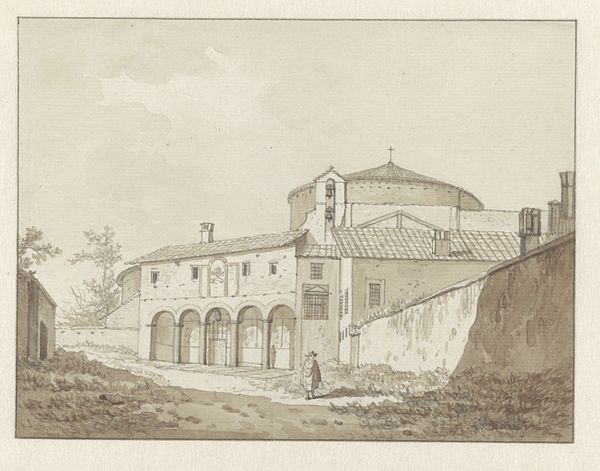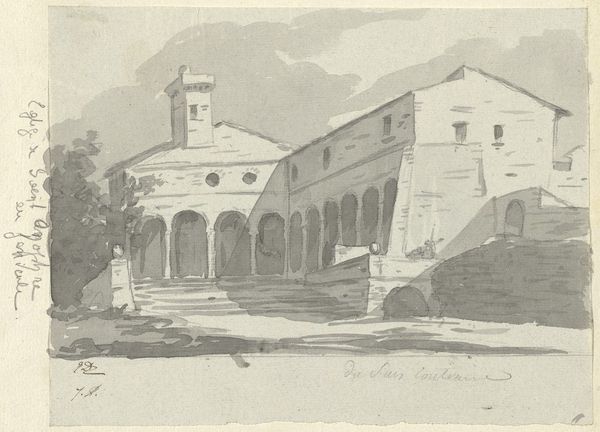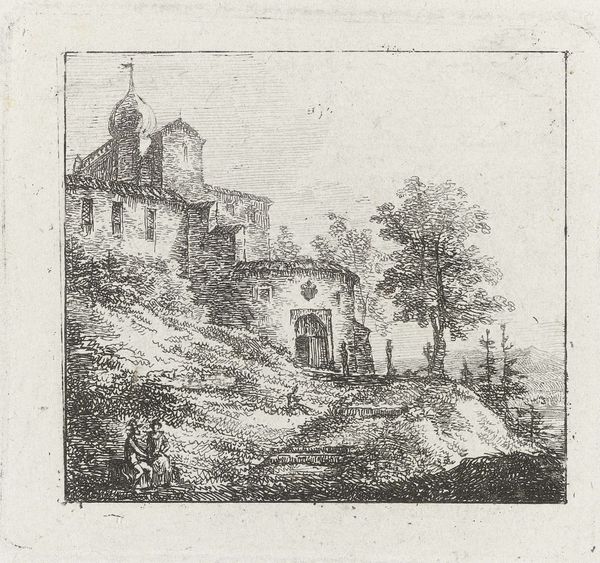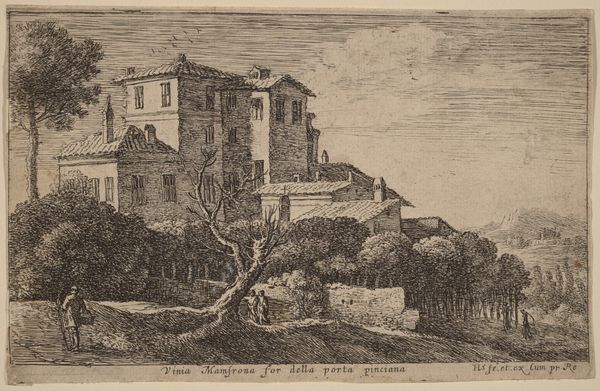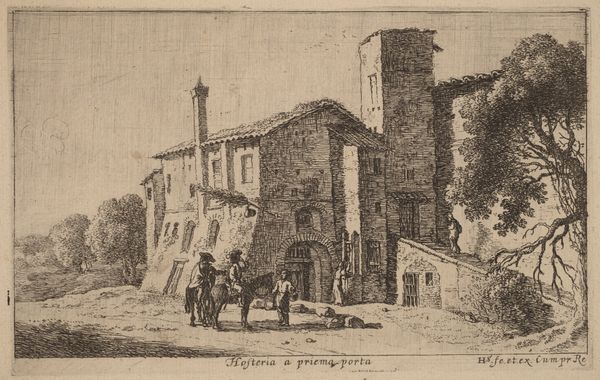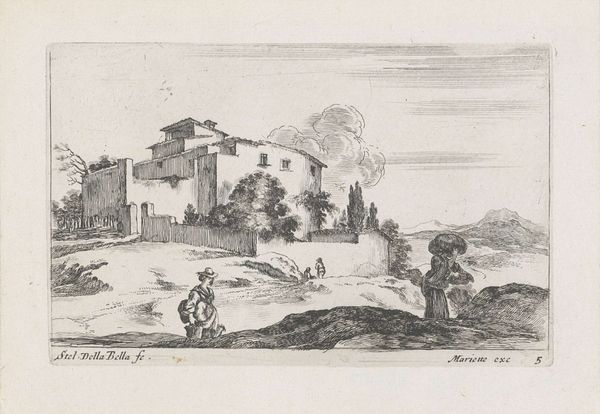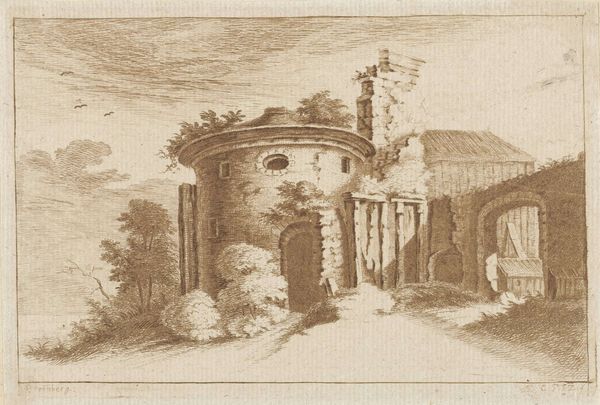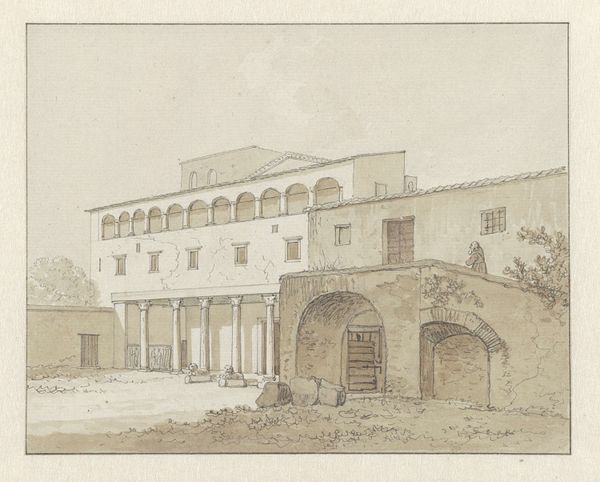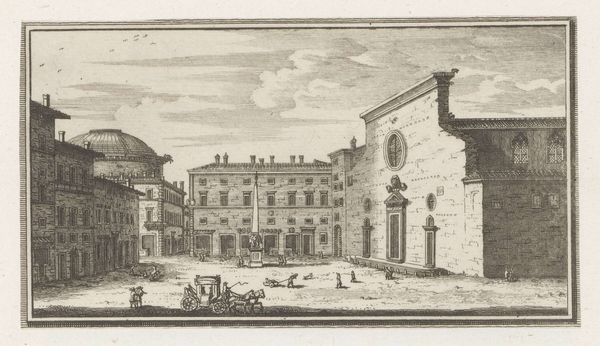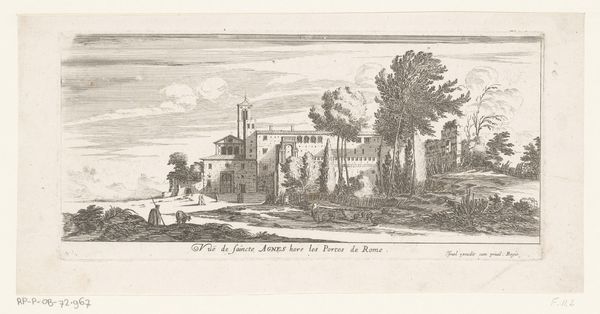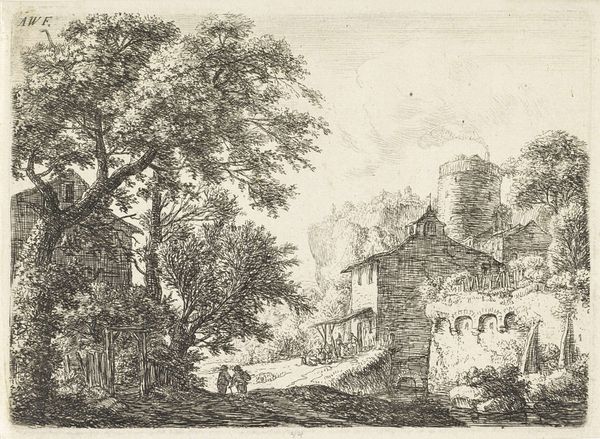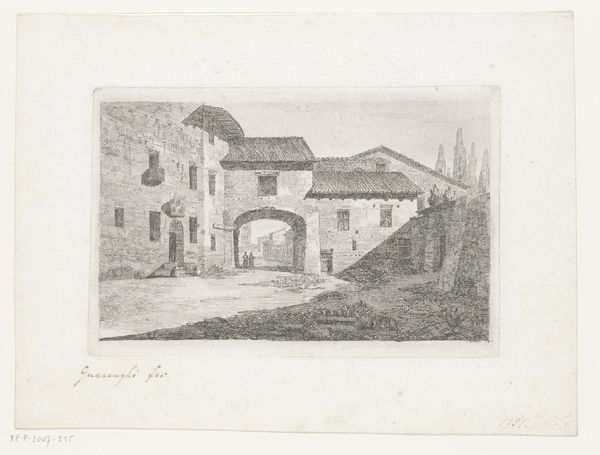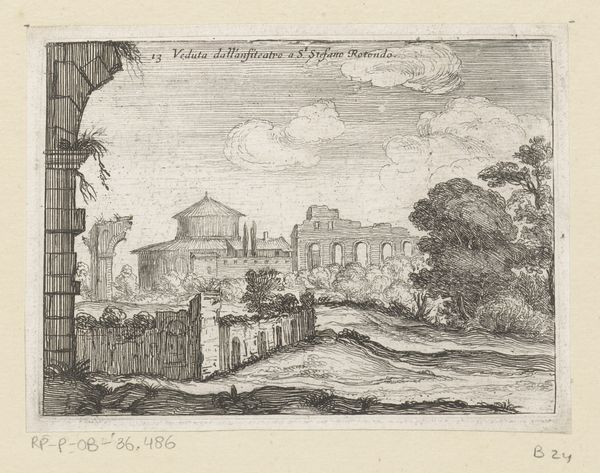
drawing, print, etching, paper, architecture
#
drawing
#
neoclacissism
# print
#
etching
#
landscape
#
paper
#
cityscape
#
architecture
Dimensions: 162 × 232 mm (image); 175 × 234 mm (sheet)
Copyright: Public Domain
Curator: I’m drawn to the overall feeling of quiet grandeur. There’s a formality to it, but also a kind of stillness, as if we’ve stumbled upon this place and everything has simply paused. Editor: That's quite a perceptive observation. We're looking at "Villa Raphael, Rome," an etching created in 1816 by Ludwig Emil Grimm. At the time, Rome had become the heart of Neoclassical art, attracting many Northern European artists, including Grimm. Curator: An etching, of course, hence the precision of lines and textures. It feels so very… orderly, even romantic in a very contained, architecturally rigorous way. Does Neoclassical inherently impose a sense of control and… structure onto landscape and human endeavor? I almost feel like someone's exerted immense willpower to put down their roots in a particular formation. Editor: I think you are onto something really interesting! Neoclassicism emerged during a period of massive social and political upheaval with the French Revolution. Think of its emphasis on symmetry, order, and rational design not as an imposition of control, but rather as the expression of civic values in an age defined by shifting social constructs, violent conflict, and emerging discourses on freedom. It may represent something of a desire to establish a tangible visual language of collective reason and an aspiration for social harmony. Curator: Yes, the imposing building really grounds the viewer! But is this about civic values? There’s something incredibly human and maybe even intimate in how this grand structure quietly blends in. It makes me think about how we tend to interpret art as a cultural relic instead of seeing buildings and places as deeply enmeshed in our individual identities. Editor: Well, to interpret art of the Neoclassical period merely as a set of relics is to neglect art’s potentiality in social formations and broader struggles around class and national identity. It makes me consider for whom would an etching such as this had served as inspiration, and which viewers would find something resembling an expression of identity. Curator: I never thought I’d see Neoclassical art as an embodiment of… well, civic discourse, actually. It invites dialogue even across such immense temporal distance. Editor: Exactly! This etching might inspire each of us to engage a conversation, prompting dialogue that traverses from the distant past to our complex, contested present.
Comments
No comments
Be the first to comment and join the conversation on the ultimate creative platform.
